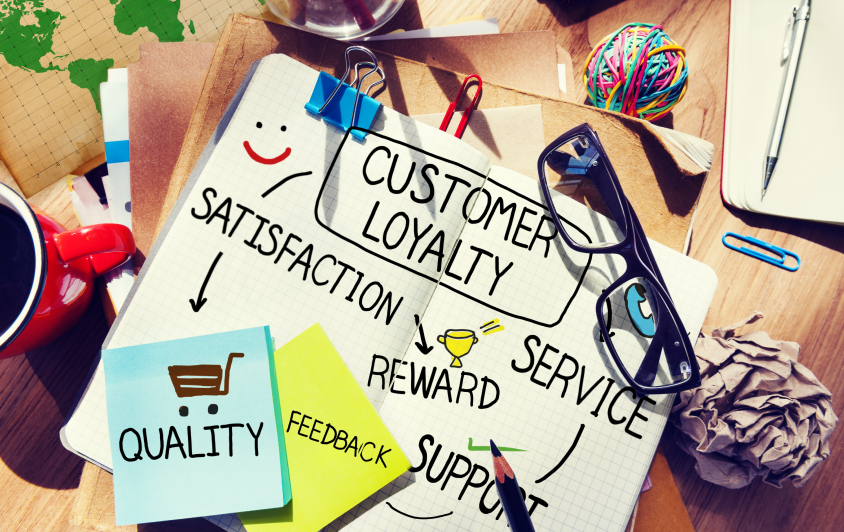Loyalty Program Statistics – Top 11 Most Impactful

Loyalty programs have become a cornerstone of modern business strategies, offering a powerful tool for attracting, retaining, and engaging customers. To understand the true impact and effectiveness of loyalty programs, it’s essential to delve into the statistics that reveal their influence on customer behavior and business outcomes. In this article, we’ll explore the top 11 most impactful loyalty program statistics sourced from reputable studies and reports, shedding light on their significance in driving profitability, customer satisfaction, and brand loyalty.
1. Increasing Customer Retention Rates
Statistic: “Increasing customer retention rates by as little as 5% can lead to a significant boost in profits, ranging from 25% to 95%.” – CustomerGauge
This statistic highlights the immense impact of customer retention on a company’s bottom line. Loyalty programs play a crucial role in fostering repeat purchases and cultivating long-term relationships with customers, ultimately driving profitability.
2. Higher Spending Among Program Members
Statistic: “On average, members of loyalty programs spend 12% to 18% more per year than non-members.” – Bond
Loyalty program members exhibit higher levels of engagement and spending compared to non-members, underscoring the effectiveness of rewards and incentives in driving customer behavior.
3. Cost of Acquiring New Customers vs. Retaining Existing Ones
Statistic: “The cost of acquiring a new customer is five to 25 times higher than retaining an existing one.” – Invesp
Investing in customer retention through loyalty programs is not only more cost-effective but also yields greater returns in the long run. By nurturing existing relationships, businesses can maximize their marketing ROI and sustain growth.
4. Likelihood of Recommending a Company with a Good Loyalty Program
Statistic: “71% of program members are likely to recommend a company with a good loyalty program.” – Annex Cloud
A well-executed loyalty program can turn customers into brand advocates, driving word-of-mouth referrals and amplifying the brand’s reach through positive recommendations.
5. Preference for Personalized Offers
Statistic: “78% of consumers are more likely to engage with offers that are personalized based on their previous interactions with the brand.” – Segment
Personalization enhances the relevance and effectiveness of loyalty program incentives, increasing customer engagement and satisfaction.
6. Average Number of Loyalty Programs Enrolled per Person
Statistic: “The average number of loyalty programs a consumer is enrolled in has increased to 14.8 programs per person in the United States.” – Bond
The proliferation of loyalty programs reflects their popularity among consumers, highlighting the importance of differentiation and value proposition in attracting and retaining members.
7. Top Incentive When Joining a Loyalty Program
Statistic: “90% of consumers consider free shipping as the top incentive when joining a loyalty program.” – Acquia
Free shipping has emerged as a key driver of loyalty program enrollment, emphasizing the importance of convenience and value-added services in customer retention strategies.
8. Influence of Loyalty Program Emails on Purchases
Statistic: “64% of consumers have made purchases because of a loyalty program email.” – Yotpo
Effective email communication plays a crucial role in driving customer engagement and conversion within loyalty programs, demonstrating the importance of targeted and personalized messaging.
9. Rate of Joining New Loyalty Programs
Statistic: “55% of consumers have joined a new loyalty program in the last year.” – Harvard Business Review
Consumer appetite for loyalty programs remains strong, indicating ongoing opportunities for businesses to attract and retain customers through innovative rewards and incentives.
10. Modification of Spending Behavior to Maximize Benefits
Statistic: “63% of consumers modify their spending to maximize the benefits they receive from loyalty programs.” – Harvard Business Review
Loyalty program members actively adjust their purchasing behavior to optimize rewards and incentives, underscoring the influence of loyalty programs on consumer decision-making.
11. Influence of Loyalty Programs on Brand Loyalty
Statistic: “60% of consumers say they would be more loyal to a brand that offers a loyalty program.” – Loyaltymagazine.com
Offering a loyalty program has a significant impact on brand loyalty, with the majority of consumers expressing a preference for brands that provide opportunities for rewards and recognition.
Conclusion: Harnessing the Power of Loyalty Programs
The statistics presented above offer valuable insights into the impact and effectiveness of loyalty programs in driving customer engagement, retention, and brand loyalty. By leveraging the principles of transparency, sustainability, and social responsibility, businesses can create loyalty programs that resonate with today’s conscious consumers, fostering trust and long-term relationships. As businesses continue to invest in loyalty programs as a strategic tool for growth, understanding and optimizing the key drivers of loyalty will be essential for success in the competitive marketplace.


